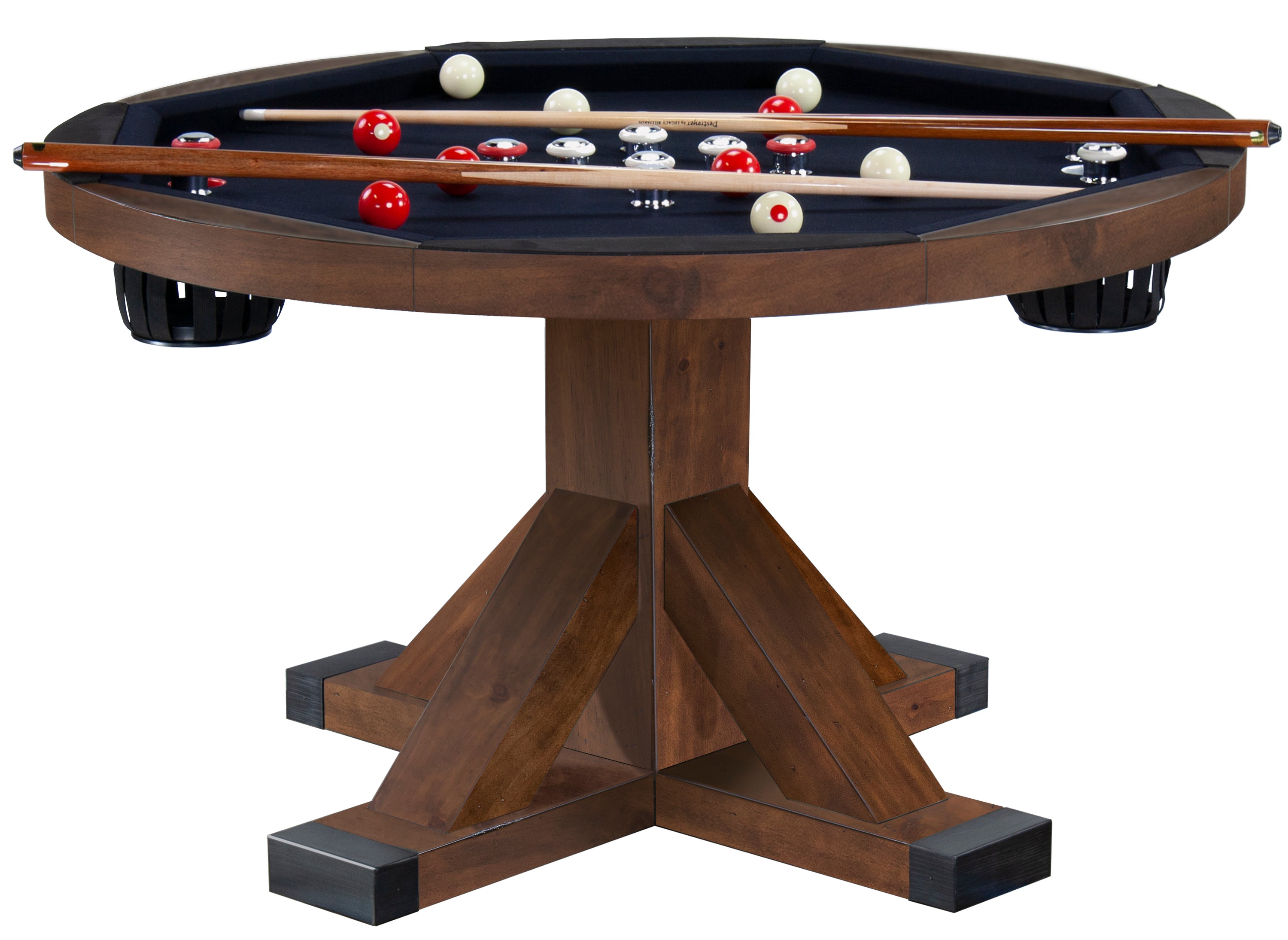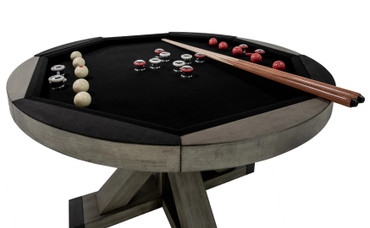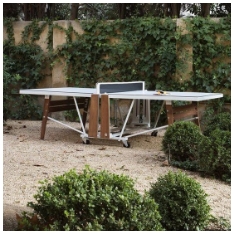Billiards has long been a popular game, attracting enthusiasts who enjoy precision, strategy, and friendly competition. However, another table-based game has been steadily gaining attention as a fun and engaging alternative: bumper pool. With its unique gameplay, straightforward rules, and competitive nature, bumper pool is quickly becoming a favorite among those looking to explore new ways to enjoy cue sports. This article delves into what makes bumper pool a great alternative to billiards, highlighting its distinctive features, strategies, and appeal.
Understanding Bumper Pool
Before comparing it to billiards, it’s important to understand what bumper pool is. Unlike traditional pool or billiards tables, bumper pool tables are smaller and feature a series of fixed bumpers or obstacles on the table surface. These bumpers create a dynamic environment where strategy and precision are essential. Each player has a set of balls and must navigate them past the bumpers to reach the opponent’s side, aiming to sink them into the pockets.
The structure of the table and the placement of obstacles make bumper pool more challenging in certain ways than billiards. While billiards relies heavily on angles and bank shots, bumper pool emphasizes positioning, defensive play, and tactical ball placement.
Key Differences Between Bumper Pool and Billiards
Understanding what makes bumper pool a great alternative to billiards requires examining the differences that set it apart:
Table Design
One of the most noticeable differences is the table itself. Bumper pool tables are compact and include fixed bumpers, which influence ball movement and make each shot more unpredictable. This contrasts with billiards tables, which are larger and smooth, allowing for more direct and calculated shots. The bumpers add a layer of complexity and excitement to the game.
Gameplay Mechanics
While billiards involves pocketing balls using a cue ball and planning multiple moves ahead, bumper pool focuses on both offensive and defensive strategies within a confined space. Players must navigate around obstacles while simultaneously preventing their opponent from scoring. This dual focus enhances engagement and keeps each match competitive from start to finish.
Skill Development
Bumper pool is excellent for honing a variety of skills. Players develop hand-eye coordination, spatial awareness, and critical thinking. The bumpers demand careful calculation of angles and force, while the fast-paced nature of the game improves reaction time. For individuals seeking a challenging yet accessible alternative to billiards, bumper pool offers a unique skill-building experience.

Why Bumper Pool Appeals to Different Audiences
Another reason bumper pool is a great alternative to billiards is its broad appeal. Unlike traditional billiards, which can sometimes feel intimidating to beginners due to the size of the table and complexity of certain shots, bumper pool is approachable for all skill levels. Its smaller table size and straightforward objectives make it easy for new players to learn quickly, while still offering a challenge for experienced competitors.
Social Engagement
Bumper pool encourages social interaction. Games are typically faster than billiards matches, allowing multiple rounds to be played in a shorter amount of time. This makes it ideal for gatherings, friendly competitions, and casual environments like bars or recreation rooms. Players often find themselves engaged in lively conversations and lighthearted rivalries, enhancing the overall social experience.
Versatility in Play
The compact size of bumper pool tables also makes them highly versatile. They fit easily into smaller spaces, making them suitable for home game rooms or commercial venues where traditional billiards tables might not fit. This adaptability adds to the game’s popularity, particularly among individuals seeking a practical yet enjoyable alternative to billiards.
Strategies That Enhance Gameplay
To appreciate what makes bumper pool a great alternative to billiards, it’s helpful to explore the strategies involved. Unlike billiards, where positioning and long shots dominate, bumper pool emphasizes tactical decision-making and quick thinking.
- Offensive Positioning: Players must carefully plan each shot to maximize the chances of scoring while avoiding obstacles.
- Defensive Play: Blocking the opponent’s path is a key tactic, requiring anticipation and precise control.
- Angle Calculations: Mastering the angles created by bumpers is essential, making geometry and physics important components of the game.
By combining offensive and defensive tactics, players remain fully engaged throughout the match, ensuring that each game feels dynamic and competitive.

Accessibility and Inclusivity
Another factor contributing to bumper pool’s appeal is accessibility. Unlike billiards, which often requires significant space and specialized equipment, bumper pool can be played in more compact areas. The learning curve is gentle, and the game is suitable for players of various ages and skill levels. This inclusivity makes it an ideal option for families, casual players, and competitive enthusiasts alike.
Conclusion
In summary, bumper pool stands out as a compelling alternative to billiards due to its unique table design, engaging gameplay, and broad accessibility. Its combination of skill development, social interaction, and strategic depth makes it appealing to both beginners and seasoned players. By offering a fresh take on cue sports, bumper pool provides an exciting and enjoyable experience that continues to grow in popularity.
Whether you’re looking for a challenging strategy game, a social activity for friends and family, or a more compact alternative to traditional billiards, bumper pool delivers on all fronts. Its distinctive features and dynamic gameplay clearly illustrate what makes bumper pool a great alternative to billiards.





